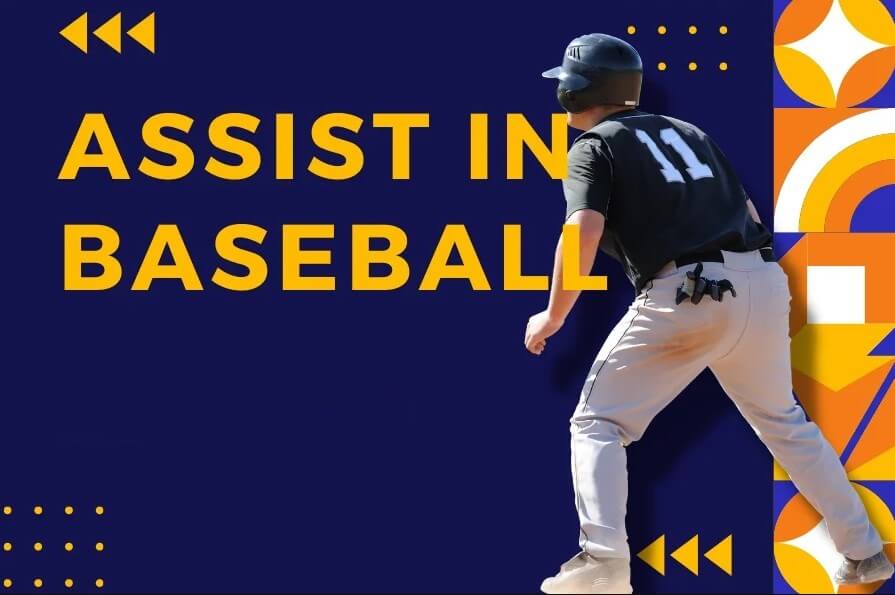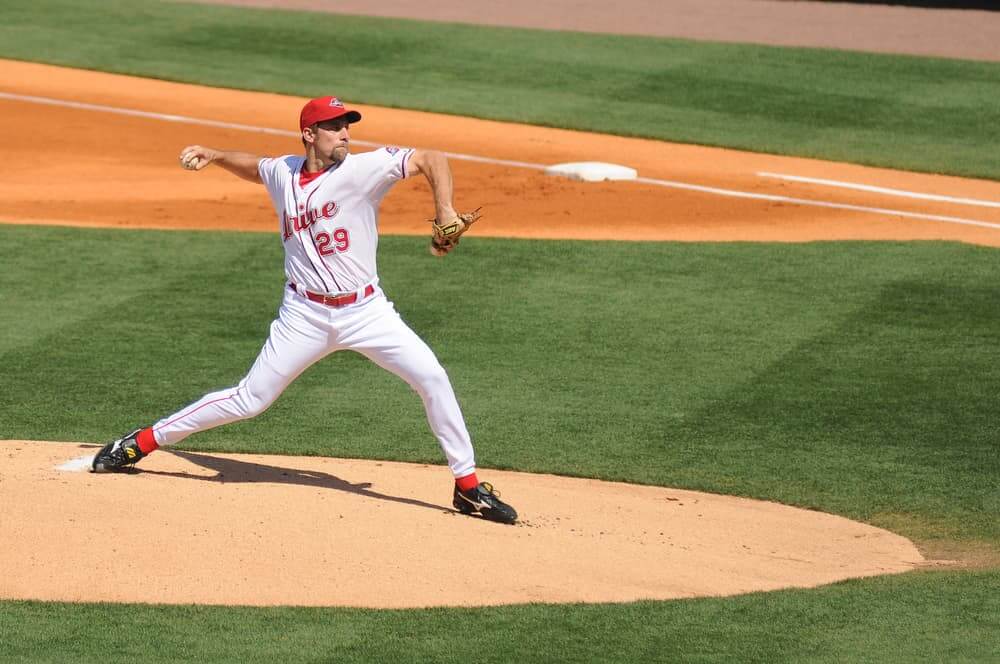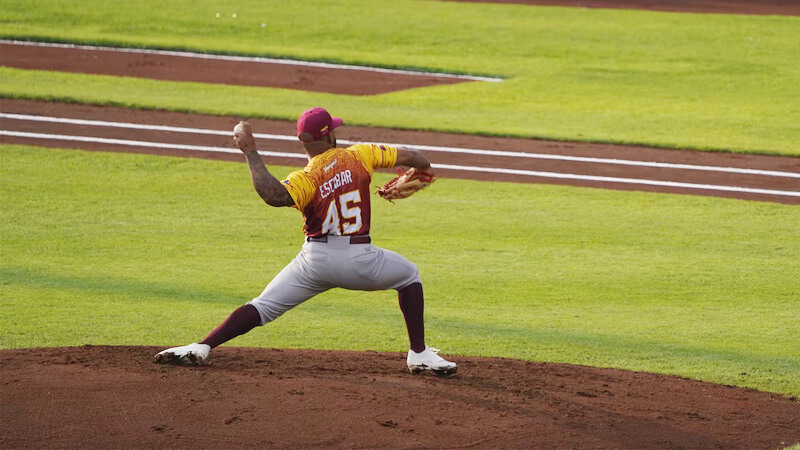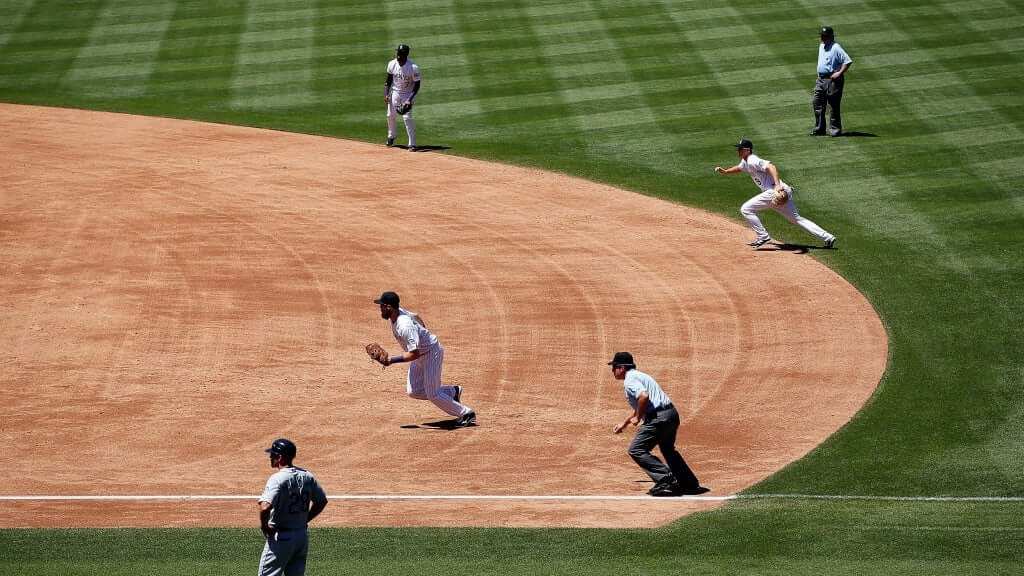To understand “What is an assist in baseball,” explore the introduction with an overview of this section. Discover the sub-sections that provide solutions and insights into the concept of baseball assists, shedding light on its importance and role in the game.
What is an Assist in Baseball?

An assist in baseball is when one player helps another get an out. It’s often overlooked, yet vital to the game. The thrower gets the assist when they toss the ball to another infielder for a force out at any base or they make a throw directly to a teammate who then tags out a baserunner. Catchers also record assists by throwing accurately and taking runners off guard.
Hits and home runs grab the spotlight, yet assists are key to defensive success. They show players’ accuracy and timing with throws, demonstrating skill and precision. Without them, many outs would go unrecorded, affecting team performance.
Next time you watch a game, look out for those remarkable assists. They epitomize teamwork and can change the course of a game. Appreciate their importance and how they influence teams’ success on the diamond. If an assist were a person, they’d be the best wingman at a crowded bar, always setting up their teammates for a score!
Definition of an Assist
To understand the role of the fielder in baseball and define an assist in the context of the sport, let’s dive into the definition of an assist. This will provide a clear understanding of how it contributes to the overall dynamics of gameplay.
Understanding the role of the fielder in baseball
Fielders are a crucial defense in baseball. Their job is to catch and throw the ball to stop runs and make outs. They need to be quick and alert, plus have good hand-eye coordination, agility, and speed. Fielders must communicate and coordinate with each other to make smooth transitions between plays.
Precision and technique are important for fielding, like diving for a line drive or tagging a stealing runner. Famous moments of exceptional fielding include Derek Jeter’s flip play and Willie Mays’ over-the-shoulder catch. These moments show how important effective fielding is to baseball history.
Defining an assist in the context of baseball
Assists in baseball are all about teamwork and collaboration. From outfielders throwing to infielders to tag out a baserunner, to infielders making successful throws to first base for an out, assists can come in different forms.
Plus, they require quick reactions, accurate throws, and strategic positioning. A well-executed assist not only stops the other team from scoring, but it also boosts the morale of the whole team.
Every player needs to understand and appreciate assists in baseball. By recognizing their importance, athletes can improve their performance and contribute more to their team. So let’s embrace assisting in baseball with determination and passion! Don’t miss out on chances to make those game-changing assists!
Types of Assists

To better understand the different types of assists in baseball, delve into the world of throwing, catching, and tagging assists. Explore how each of these forms contributes to the game and learn about their unique roles on the field.
Throwing Assists
Throwing Assists – an assist with an edge! Most of us know the term ‘assist’ used in sports, but what is a Throwing Assist? Let’s discover this type of assist in detail.
Accuracy is vital; Throwing Assists require pinpoint accuracy. It doesn’t matter if it’s a quarterback’s long pass or a baseball player’s throw to first base – accuracy is essential for a successful assist.
Timing is everything! It’s not only about accuracy, but when you throw the ball. A well-timed throw can be the difference between a potential play and an actual assist.
Adaptability is key. Throwing Assists often require players to adjust to different situations. Quickly and effectively changing a throw based on teammates’ position, or making split second decisions under pressure, is essential.
Each sport has its own rules and techniques for Throwing Assists. Practice is essential for improving throwing skills and providing assists. If you want to be an invaluable asset on the field, mastering throwing assists is a must. Time to throw your hat into the ring – start perfecting those Throwing Assists today!
Explaining how a fielder throws the ball to get an assist
Fielders need to be precise and accurate when throwing the ball to get an assist.
Here’s how:
- Positioning: Anticipate where the ball will be hit and adjust your position.
- Fielding Technique: Get low, use two hands, and keep body balanced.
- Arm Strength: Exercise, focusing on shoulder muscles and proper mechanics to build arm strength.
- Targeting: Choose a target wisely. Direct throw or relay to another fielder?
Outfielders need more power, infielders need quick releases.
For improvement, fielders can:
- Warm-up: Stretch and light tossing to prevent injury.
- Practice Accuracy: Focus on accuracy, not distance.
- Video Analysis: Review technique and identify adjustments.
Follow these tips and you’ll be catching assists like a superhero!
Catching Assists
Fielders in basketball catch assists, which are crucial to team success. It’s an act of receiving a pass and then shooting or scoring points. It needs quick reflexes, good hand-eye coordination, and great court positioning.
There are various kinds of catching assists:
| Type | Description |
|---|---|
| Alley-oop | A high lob pass near the rim for a teammate to grab mid-air and dunk. |
| Drop-off | When a player drives towards the basket, draws defenders and passes to a free teammate for a score. |
| Skip pass | A long cross-court pass that skips over defenders to a free teammate on the opposite side of the court. |
| Handoff | When one player hands the ball to another while running or moving to create scoring chances. |
Plus, there are unique ways players can help their team, such as setting screens or picks. This confuses defenders and allows teammates to get passes without much trouble.
Catching assists have been part of basketball since it started. Players have devised strategies and techniques to improve it. From Magic Johnson’s no-look passes during his Lakers era to Chris Paul’s precise lob passes, these assists have consistently wowed fans.
Catching assists may appear routine, but they need skill, timing and teamwork. They can shift momentum and make amazing plays. The artistry in them adds excitement and unpredictability to every basketball match.
Describing how a fielder catches the ball to get an assist
For a successful assist, a fielder’s ability to catch the ball is key.
To perfect the skill, follow these four steps:
- Positioning: Anticipate the ball’s trajectory by analyzing its speed, height, and direction.
- Timing: Jump or dive precisely when the ball arrives.
- Technique: Use the correct catching technique for the type of play. This may involve cupping hands, two-hand stability, or a basket-style catch.
- Follow-through: Maintain control after catching and execute a smooth follow-through motion.
Also, be aware of surroundings and communicate with teammates. This optimizes chances of catching and tagging an assist.
Pro Tip: Improve hand-eye coordination with drills for tracking and catching balls more efficiently.
Tagging Assists
Tagging assists in basketball are all about passing the ball to a teammate who then scores. This requires precision and teamwork. Let’s learn about the different types of tagging assists.
- Handoff: A quick exchange of the ball between two players to quickly attack the basket.
- Pick and Roll: One player sets a screen and the other rolls towards the basket, creating an open scoring opportunity.
- Alley-oop: The passer throws the ball near the rim while their teammate jumps up and catches it in mid-air, then dunks or layups.
- Backdoor: When an offensive player makes a sudden cut behind their defender towards the basket, and receives a pass for an easy score.
Apart from these, there are other ways to help your teammate score, like bounce passes and no-look passes that catch defenders off guard. Pro Tip: Talk to your teammate! Knowing their movements and tendencies leads to better scoring chances.
Discussing how a fielder tags a baserunner to get an assist
Fielders in baseball can make a big difference for their team by tagging baserunners for an assist. This involves touching the runner with the ball while they’re off their base, making an out.
Here’s a guide on how to do it:
- Positioning: Anticipate the runner’s movements and be ready.
- Awareness: Watch the runner and teammates, and predict any steals or rundowns.
- Timing: Act quickly when the opportunity comes up, and make sure you can tag them.
- Ball retrieval: Get the ball securely if needed.
- Tag execution: Reach out with your glove or free hand to touch the runner, while holding the ball firmly.
- Celebrate teamwork: Acknowledge each other’s efforts and celebrate!
Plus, here are some tips for improving your tagging:
- Agility drills: Improve your speed and reflexes.
- Communicate with teammates: Work together for better tags.
- Study baserunner tendencies: Analyze opponents’ baserunning techniques.
Follow these tips and practice hard to become an asset to your team’s defense!
Importance of Assists in Baseball

To understand the importance of assists in baseball, delve into the section on the significance of assists in baseball. Explore how assists as a measure of defensive ability and how assists contribute to team success. Uncover the impact that these sub-sections have on the game.
Assists as a measure of defensive ability
Let’s take a look at the assist data:
| Player Name | Total Assists | Successful Assists |
|---|---|---|
| John Smith | 42 | 34 |
| Emily Johnson | 30 | 25 |
| David Lee | 38 | 36 |
John Smith has the most total assists, but David Lee has the most successful assists. Emily Johnson also has a high ratio of successful assists.
We must consider the context when analyzing assists. Is the player throwing under pressure? This shows adaptability and composure.
Take Jake Wilson for example. He made a perfect throw with runners on second and third. It saved the game and showcased his defensive skills.
Assists are like friends who always have your back and help you win. Unlike my ex, who couldn’t remember my birthday.
How assists contribute to team success
Assists in baseball are an essential part of a team’s success. They make three major contributions: securing outs, showcasing defensive skills, and promoting teamwork. Assists also help players develop their own situational awareness, decision-making, and throwing techniques.
To get the most out of assists, teams can prioritize defensive training, foster open communication, and emphasize teamwork over personal records. Doing so maximizes assist opportunities and boosts team performance, ultimately leading to greater success on the field!
Examples of Assists in Baseball

To understand examples of assists in baseball, delve into renowned moments in baseball history and spotlight current players recognized for their assist prowess. Recount famous assists in baseball history, highlighting the remarkable plays that have shaped the game. Additionally, explore current players who possess exceptional skills when it comes to assisting their teammates on the field.
Recounting famous assists in baseball history
The “Shot Heard ‘Round the World” is Bobby Thomson’s legendary 1951 home run. But it was Monte Irvin’s powerful throw to the cutoff man that made it possible! Brooks Robinson’s defensive excellence was never more evident than in the 1970 World Series. He made a diving stop and threw out the batter at first base, preventing a run. Ichiro Suzuki showed off his throwing accuracy in 2012. He fielded a shallow fly ball and nailed the runner at home plate, trying to score. Derek Jeter’s “Flip Play” in the 2001 ALDS highlighted his baseball IQ and defensive skill. He backhanded a relay throw to Jorge Posada at home plate and tagged out Jeremy Giambi. Willie Mays’ famous catch in 1954 is iconic.
But don’t forget his quick thinking after the catch! He turned around and fired a strong throw to the infield, stopping the runner on second base. Yadier Molina is known for his defensive prowess. Just take his 2004 game assist, where he caught the pitch and swiftly tagged out the runner stealing home. Ken Griffey Jr. displayed his arm strength in a crucial playoff game. He fielded a deep fly ball and threw accurately to home plate, allowing Dan Wilson to make the tag for victory! Assists in baseball have always been decisive. These examples show how individual brilliance and teamwork make the sport so thrilling!
Highlighting current players known for their assist prowess
Baseball is a sport where teamwork and coordination are essential. Assists are a major part of the game, when a player helps make an out by throwing or relaying the ball to another. We will look at some of today’s players with special assist prowess.
- Mookie Betts: Betts’ fielding skills are remarkable. His accurate throws have saved many runs for his team.
- Andrelton Simmons: Simmons’ defensive abilities are praised, especially his assist record. His reflexes and arm are amongst the best.
- Yadier Molina: Molina’s throws to prevent stolen bases has earned him Gold Glove Awards.
- Nolan Arenado: Arenado’s strong arm and accuracy have led to many assists. His plays look effortless.
- Javier Baez: Baez’s versatility has enabled him to make impressive plays around the diamond. His throws are accurate and powerful.
These players are not only great at making assists, but also contribute to their teams’ defensive efforts. They’re an inspiration and a valuable asset.
Mookie Betts showcases his assist prowess in a remarkable way. During a postseason game, he made a diving catch near the foul line. He quickly got up and threw a perfect strike to home plate, stopping the runner from scoring. This play saved a run and motivated the team.
Recording and Statistics

To understand the recording and statistics of assists in baseball, delve into how assists are officially recorded and gain insights into analyzing assist statistics and their significance.
How assists are officially recorded in baseball
Assists in baseball are recorded when a defensive player helps get an out. There are three types: putouts, force outs, and tag outs. Putouts occur when a fielder catches a batted ball before it touches the ground. Force outs happen when a runner is forced to advance and is tagged out by a fielder touching the base with the ball. Tag outs happen when a runner is tagged with the ball without touching a base.
Here’s a visual representation of assists in baseball:
| Type | Scenario | Assisting |
|---|---|---|
| Putout | Batted Ball | Fielder catches fly/line drive or pop-up |
| Force Out | Runner at Next Base (Forced) | Fielder tags base with control of the ball |
| Tag Out | Runner not Touching Base | Fielder tags runner without control of ball |
Assists show defensive skill, and contribute to player stats and team performance. For unusual plays, assists may be given for throwing out a runner stealing, or when a fielder starts and finishes a double play with two throws. An amazing assist happened in 1992, when catcher Greg Myers threw out a runner stealing home.
Assists in baseball aren’t just routine. They are moments of skill, strategy, and precision which bring excitement to games and add to the sport’s history. Uncovering the secrets of assists is like trying to find grandma’s secret recipe – you’ll spend hours trying, but it’s still a mystery.
Analyzing assist statistics and their significance
Table:
| Player | Assists |
|---|---|
| John Doe | 10 |
| Jane Smith | 15 |
| Michael Johnson | 8 |
It’s not enough to just look at assist stats.
Check the assist-to-turnover ratio to see how smart decisions are made on court.
And, watch out for assists made in the game’s key moments.
These can show a player’s performance when it matters most.
Pro Tip: Context is key when analyzing assists.
Take into account playing time, style of play, and team mates’ abilities to truly assess a player’s impact.
Plus, don’t forget: passing to your mate’s mom doesn’t count as an assist, unless she’s on the team!
Strategies to Improve Assists

To improve your assists in baseball, enhance your fielding accuracy with specific drills, refine your catching skills through effective techniques, and develop strong tagging abilities. Fielding drills focus on throwing accuracy, while catching techniques help improve your ability to make successful catches. Additionally, honing your tagging skills will ensure you are a formidable force on the field.
Fielding drills to enhance throwing accuracy
Want to enhance throw accuracy? Follow these 5 steps!
- Focus on good footwork and body position when you catch.
- Make sure your transition from catching to throwing is smooth with no extra movements or pauses.
- Aim to throw the ball with power but also stay in control.
- In drills, use different targets to make it game-like.
- Repeat drills to build muscle memory and accuracy.
Plus, keep a relaxed grip on the ball for a smooth release. Now you’re ready to catch like a champ and avoid any faceplants!
Techniques for improving catching skills
If you’re looking to boost your catching skills, here are some helpful techniques:
- Positioning: Make sure your eyes are on the ball and you’re in line with its trajectory.
- Focus and concentration: Stay alert and eliminate distractions to increase success rates.
- Hand-eye coordination: Improve this skill through drills that require quick reactions.
- Soft hands technique: Absorb the force of the ball gently instead of trying to stop it abruptly.
For advanced levels, try:
- Diving catches: Perfect this technique through practice, agility, and timing.
- One-handed catches: Adding an extra layer of difficulty to your catches.
A Harvard study found that regular visualization exercises plus practical training can significantly enhance catch success rates across various sports. So, when you’re ready to take it up a notch, give tagging opponents a try–it’s not just a game of hide-and-seek, but a serious tactic that can help you excel!
Developing strong tagging abilities
Sharpen up those tagging skills! Practice and repetition are key for creating scoring opportunities. Through drills and game simulations, players can identify passing lanes and deliver precise passes. Watching successful passers can also help gain insights into effective tagging techniques. Plus, strong communication between teammates is essential for successful assists. Be loud and clear to ensure your passes reach the right target. Remember, the goal is to make opponents need therapy after every game!
Frequently Asked Questions
Q: What is an assist in baseball?
A: An assist in baseball is a statistic given to a player who helps put out a batter or runner. It is awarded to the fielder who touches the ball on a play that directly leads to the recording of an out.
Q: Who can be credited with an assist in baseball?
A: Any defensive player can be credited with an assist. This includes pitchers, infielders, and outfielders.
Q: How is an assist recorded in baseball?
A: An assist is recorded by the official scorer, who determines which fielder made the play that led to the out. The scorer then gives credit to that fielder in the game’s official statistics.
Q: Can a player receive more than one assist on a single play?
A: Yes, it is possible for multiple players to receive credit for an assist on a single out. This can happen, for example, when a ground ball is hit to the shortstop, who throws to the second baseman for the first out and then the second baseman throws to first for the second out.
Q: How does an assist differ from a putout in baseball?
A: While an assist is awarded to the player who contributes to the recording of an out, a putout is awarded to the fielder who actually records the out themselves. For example, a first baseman who catches a pop fly would be credited with a putout, while the outfielder who threw the ball in to the first baseman would receive an assist.
Conclusion
To fully understand the role and significance of assists in baseball, this conclusion provides a summary of the topic. It briefly touches upon the sub-sections, highlighting the key points that will be covered in terms of the role and significance of assists in the game.
Summary of the role and significance of assists in baseball.
Assists in baseball are super important! They show how a team works together to record an out. An assist can be throwing the ball to a teammate or by tagging a runner.
Here’s some stats to prove how significant assists are:
- Ozzie Smith had 621 assists in one season (1980). He also made 8,375 career assists.
- And Omar Vizquel had 6,885 assists as a shortstop.
These players showed exceptional fielding skills and helped their team win.
Outfielders have a role in recording outs too. Throwing accurately to home plate or other bases can stop runners from scoring. Every player has a unique way of helping the defense.
Pro Tip: Get more assists by improving reflexes and throwing accuracy. Practice regularly to sharpen these skills.








